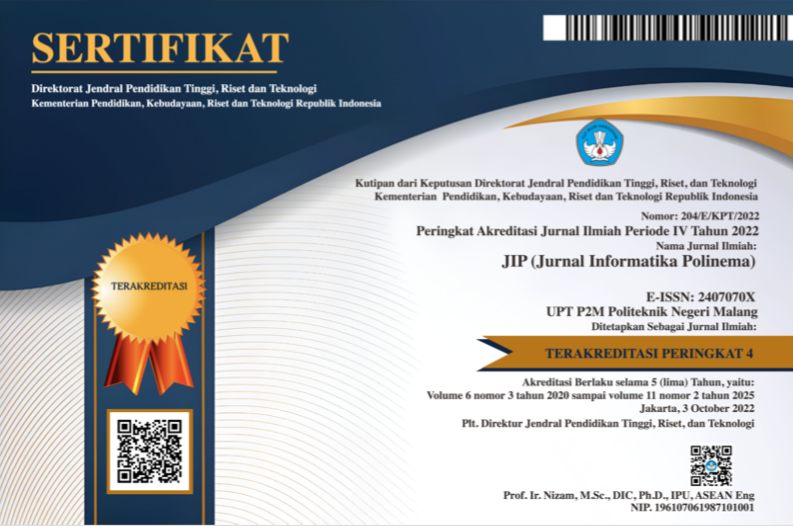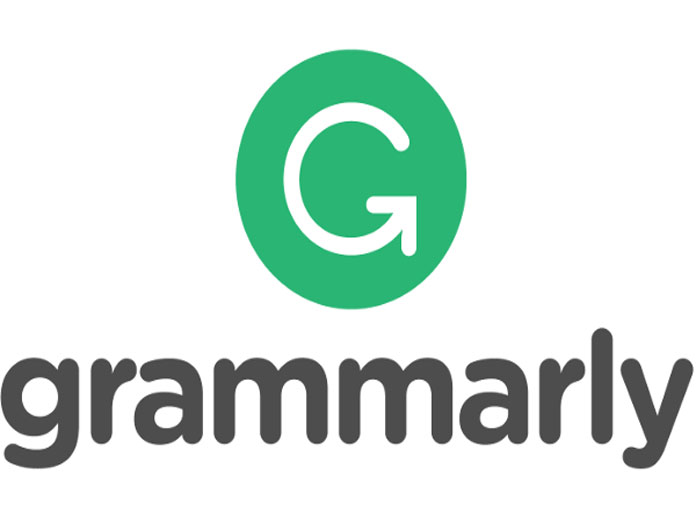Development of Deep Learning Applications for Face Recognition in Online Media to Determine Student Presence
Abstract
Attendance is done manually during online lectures, namely by asking all students to activate the camera on their respective devices so that faces are visible and attendance is done. To make attendance easier, facial recognition is the right way to solve this problem. The initial stage to perform face recognition is face detection and extracting student facial features. This feature will be compared with the student face dataset so that the method used can identify the detected student. The method used in this research is Convolutional Neural Network (CNN) for feature extraction and face recognition. The results of this study by conducting attendance in 6 classes of students at the State Polytechnic of Malang majoring in Informatics Engineering and Information Management resulted in an average attendance time per class of 4.466 seconds and face recognition accuracy was 77.27%.
Downloads
References
Endrianti, F., Setiawan, W., & Wihardi, Y. (2018). Sistem Pencatatan Kehadiran Otomatis di Ruang Kelas Berbasis Pengenalan Wajah Menggunakan Metode Convolutional Neural Network ( CNN ). JATIKOM - Jurnal Aplikasi Dan Teori Ilmu Komputer, 1(1), 40–44.
Fukushima, K. (1980). Neocognitron: A self-organizing neural network model for a mechanism of pattern recognition unaffected by shift in position. Biological Cybernetics, 36(4), 193–202. https://doi.org/10.1007/BF00344251
H. Lami, S. T. (2019). Rancang Bangun Sistem Pengenalan Wajah Daftar Pencarian Orang ( Dpo ). Jurnal Media Elektro, VIII(2), 129–133.
Harish J, N. K., Hamdi, Z., Ditya Ag, B., & Dewanto, S. (n.d.). Sistem Absensi Otomatis Menggunakan Pengenalan Wajah Dengan Metode Neural Network.
He, K., Zhang, X., Ren, S., & Sun, J. (2016). Deep residual learning for image recognition. Proceedings of the IEEE Computer Society Conference on Computer Vision and Pattern Recognition, 2016-Decem, 770–778. https://doi.org/10.1109/CVPR.2016.90
Hubel, D. H., & Wiesel, T. N. (1968). Receptive fields and functional architecture of monkey striate cortex. The Journal of Physiology, 195(1), 215–243. https://doi.org/10.1113/jphysiol.1968.sp008455
Indira, B., Shalini, M., Murthy, M. V. R., & Shaik, M. S. (2012). Classification and Recognition of Printed Hindi Characters Using Artificial Neural Networks. International Journal of Image, Graphics and Signal Processing, 4(6), 15–21. https://doi.org/10.5815/ijigsp.2012.06.03
King, D. E. (2009). Dlib-ml: A machine learning toolkit. Journal of Machine Learning Research, 10, 1755–1758.
Kumar, A., Kaur, A., & Kumar, M. (2019). Face detection techniques: a review. Artificial Intelligence Review, 52(2), 927–948. https://doi.org/10.1007/s10462-018-9650-2
LeCun, Y., Bottou, L., Bengio, Y., & Haffner, P. (1998). Gradient-based learnxing applied to document recognition. Proceedings of the IEEE, 86(11), 2278–2323. https://doi.org/10.1109/5.726791
Luo, X., Shen, R., Hu, J., Deng, J., Hu, L., & Guan, Q. (2017). A Deep Convolution Neural Network Model for Vehicle Recognition and Face Recognition. Procedia Computer Science. https://doi.org/10.1016/j.procs.2017.03.153
Inna, S., Budi, A., & Maulana, H. (2016). Pengenalan Citra Wajah Sebagai Identifier Menggunakan Metode Principal Component Analysis ( PCA ). 9(2), 166–175.
Simard, P. Y., Steinkraus, D., & Platt, J. C. (2003). Best Practices for Convolutional Neural Networks Applied to Visual Document Analysis. Microsoft Research, Icdar, 1–6.
Strigl, D., Kofler, K., & Podlipnig, S. (2010). Performance and scalability of GPU-based convolutional neural networks. Proceedings of the 18th Euromicro Conference on Parallel, Distributed and Network-Based Processing, PDP 2010, 317–324. https://doi.org/10.1109/PDP.2010.43
Zhou, L., Li, Q., Huo, G., & Zhou, Y. (2017). Image classification using biomimetic pattern recognition with convolutional neural networks features. Computational Intelligence and Neuroscience, 2017. https://doi.org/10.1155/2017/3792805
Zufar, M., & Setiyono, B. (2016). Convolutional Neural Networks Untuk Pengenalan Wajah Secara Real-Time. Jurnal Sains Dan Seni ITS, 5(2), 128862. https://doi.org/10.12962/j23373520.v5i2.18854
Zulkhaidi, T. C. A.-S., Maria, E., & Yulianto, Y. (2020). Pengenalan Pola Bentuk Wajah dengan OpenCV. Jurnal Rekayasa Teknologi Informasi (JURTI), 3(2), 181. https://doi.org/10.30872/jurti.v3i2.4033
Copyright (c) 2022 Cahya Rahmad, ST., M.Kom., Dr. Eng., Arie Rachmad Syulistyo, S.Kom., M.Kom, Alan Rizky Wardana

This work is licensed under a Creative Commons Attribution-NonCommercial 4.0 International License.
Copyright for articles published in this journal is retained by the authors, with first publication rights granted to the journal. By virtue of their appearance in this open access journal, articles are free to use after initial publication under the International Creative Commons Attribution-NonCommercial 4.0 Creative Commons CC_BY_NC.
















